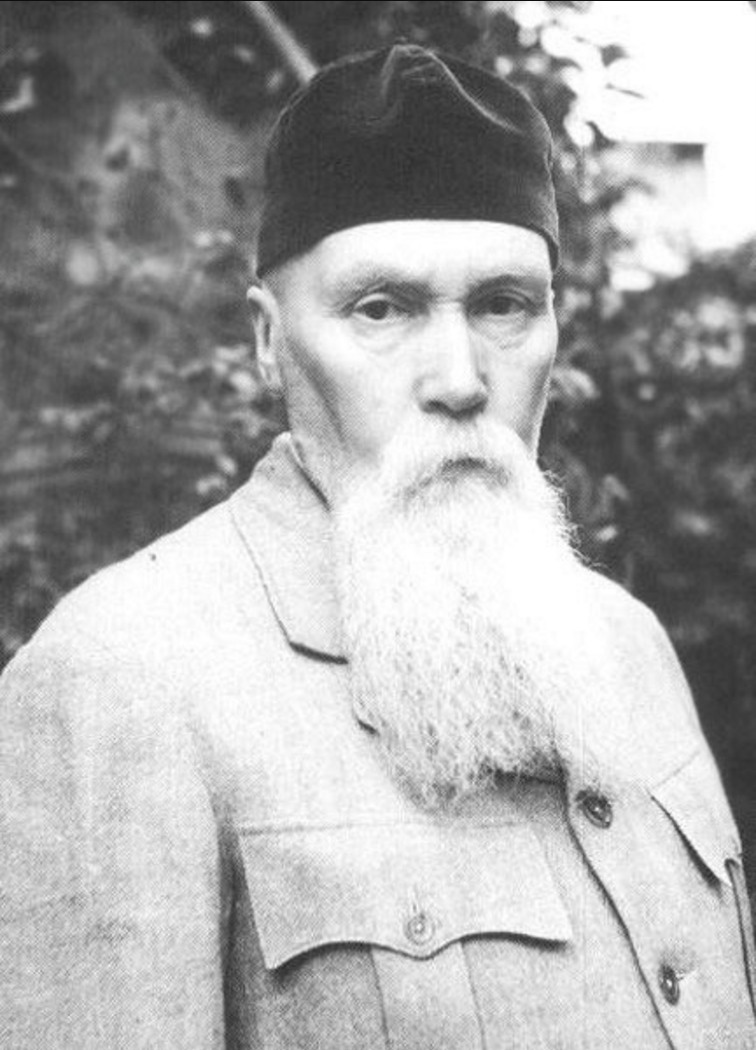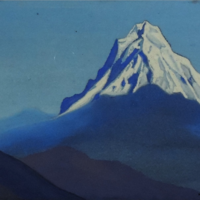More about Nicholas Roerich
Works by Nicholas Roerich

Contributor
Nicholas Roerich was the self proclaimed art world bodyguard, creating the Roerich Pact aka The Treaty on the Protection of Artistic and Scientific Institutions and Historic Monuments.
He was also “an archaeologist, art historian, furniture designer, poet, peace activist, botanist, spiritual philosopher, mentor to Marc Chagall, political adviser, costume designer (for Sergei Diaghilev’s Ballets Russes and Rimsky-Korsakov’s operas), women’s rights advocate and founder of a yoga society with his wife, Helena, who herself was an author” and of course an artist. In other words, if Nicholas Roerich were to apply to college now, he would have just enough extracurricular activities to get into an average school.
Roerich was born in Saint Petersburg, Russia in 1874 to Konstantin and Maria Roerich. Konstantin was a lawyer and as such gave his children a good education and constant contact with the writers, scientists and artists of middle-class Russia. Young Nicholas showed a passionate interest and talent for art while very young but his father figuratively sh*t on his dreams. Nicholas was to be a lawyer like his father. But he only agreed to go to law school if he could simultaneously go to art school. So the great underachiever did both, earning his art degree in 1897 and his law degree in 1898.
As soon as he graduated he intended to go to Europe but instead met a special lady, Helena Shaposhnikov. He fell in love and still went to Europe but when he returned he got married. The two of them started a wild journey full of travel, occult mysticism and art. They began their lives together in Russia and then moved to Finland, London, and The United States (Chicago and New York). Throughout this entire time, the family had been planning to go to India, as they had become completely engrossed in Hinduism. After their time in the U.S., the Roerich’s with their two sons and five friends went on a five-year trip through Asia. Roerich himself said the expedition “started from Sikkim through Punjab, Kashmir, Ladakh, the Karakoram Mountains, Khotan, Kashgar, Qara Shar, Urumchi, Irtysh, the Altai Mountains, the Oyrot region of Mongolia, the Central Gobi, Kansu, Tsaidam, and Tibet.” We’ve never heard of most of these places but we can assume Roerick liked them because he never went back to Russia. He died in Naggar, India in 1947 with one of the coolest legacies of all time. One of his paintings was the most expensive sold at a Russian auction ever. He has a minor planet named after him. He was the inspiration for the H.P. Lovecraft novel, "At the Mountains of Madness." And last but (only just) not least, he was nominated for a Nobel Peace Prize three times for being the great art protector.
All in all, he was pretty cool.
Sources
- Besonen, Julie. "Visions Of A Forgotten Utopian." Nytimes.com. N.p., 2014. Web. 7 July 2017.
- "Nicholas Roerich Museum New York." Roerich.org. Web. 7 July 2017.
Featured Content
Here is what Wikipedia says about Nicholas Roerich
Nikolai Konstantinovich Rerikh (Russian: Николай Константинович Рерих), better known as Nicholas Roerich (/ˈrɛrɪk/; October 9, 1874 – December 13, 1947), was a Russian painter, writer, archaeologist, theosophist, philosopher, and public figure. In his youth he was influenced by Russian Symbolism, a movement in Russian society centered on the spiritual. He was interested in hypnosis and other spiritual practices and his paintings are said to have hypnotic expression.
Born in Saint Petersburg to a well-to-do Baltic German father and a Russian mother, Roerich lived in various places until his death in Naggar, India. Trained as an artist and lawyer, his main interests were literature, philosophy, archaeology, and especially art. Roerich was a dedicated activist for the cause of preserving art and architecture during times of war. He was nominated several times for the Nobel Peace Prize. The so-called Roerich Pact for the protection of cultural objects was signed into law by the United States and most other nations of the Pan-American Union in April 1935.
Check out the full Wikipedia article about Nicholas Roerich











